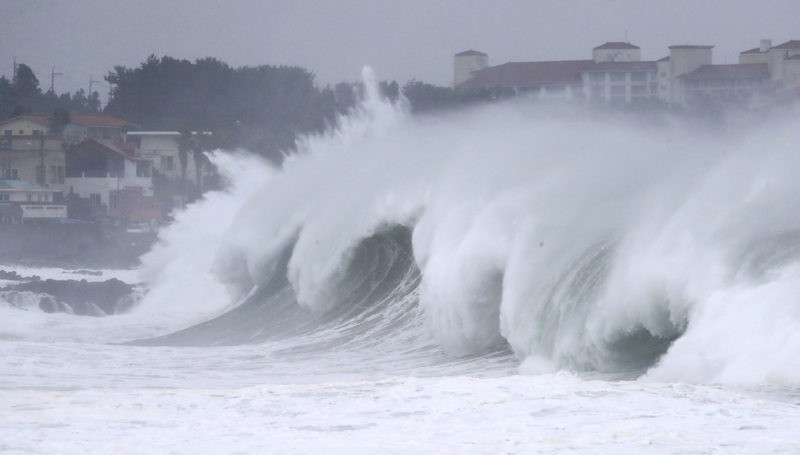Rains hit southern Japan island as Koreas ready for typhoon
TOKYO: An offshore typhoon brought torrents of rain to southern Japan on Wednesday heading to the Korean Peninsula as another storm in the Pacific was growing stronger.
Typhoon Maysak was west of Japan, maintaining sustained winds of 162 kilometres per hour (100 mph) with higher gusts, the Japan Meteorological Agency said.
Japan's main southern island of Kyushu was warned of heavy rainfall, fierce winds and possible mudslides.
The storm brought down trees and overturned cars on Okinawa on Tuesday. More than 700 home were still without electricity, according to Okinawa Electric Power Co.
Hundreds of flights were cancelled in South Korea ahead of Maysak, while North Korea scrambled to protect its buildings, roads and crops from the second typhoon to hit their peninsula in as many weeks.
Maysak was passing south of South Korea's southern resort island of Jeju as of Wednesday morning and was forecast to make landfall near the southern mainland port of Busan early Thursday.
South Korea's weather agency said the typhoon will affect most of the country and warned of potential damage from the "very strong winds and very hard rain."
More than 340 domestic flights in and out of Jeju were cancelled as of Wednesday morning, the Korea Airports Corporation said. Authorities were also restricting entry to public parks and were moving hundreds of fishing boats and passenger vessels to safety.
North Korea's official Korean Central News Agency said officials were employing "urgent measures" to minimize damage from the typhoon, which was forecast to graze its eastern region before reaching land near the northeastern city of Chongjin.
KCNA said officials were examining buildings, roads, railways, cropland and drainage systems and moving fishing boats to safety. "Scrupulous" protective measures were being applied to power stations to ensure stable power supply during the storm, the report said.
Another storm in the Pacific was blowing north and forecast to affect North Asia by the weekend. Tropical Storm Haishen, packing sustained winds of up to 90 kph (56 mph), could gain in ferocity before slamming into Japan's southern main islands of Kyushu and Shikoku before reaching the Korean Peninsula on Monday.
Typhoon Bavi last week damaged homes, buildings and crops in the Koreas. South Korean authorities said no casualties were reported, and North Korean state media did not mention any deaths or injuries.
Storms, coming so close one after the other, bring great risk to disaster-prone regions.






